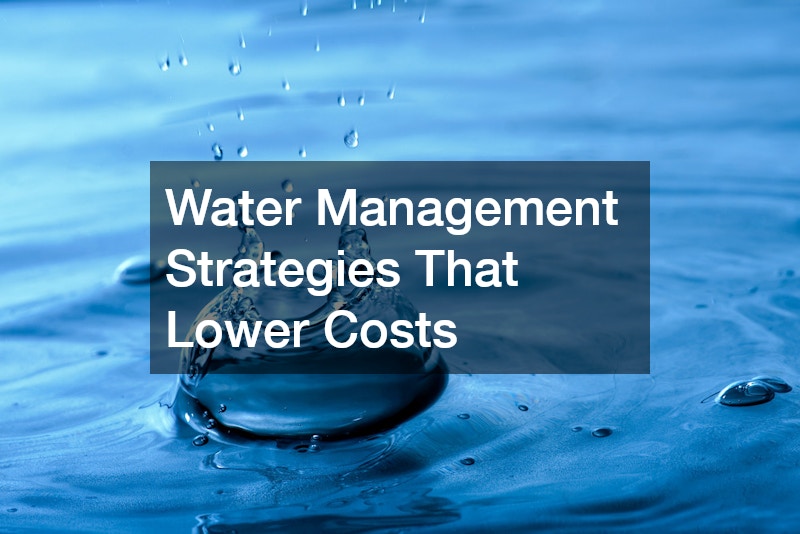Keeping a pool clean, safe, and budget-friendly doesn’t have to feel overwhelming for first-time homeowners. Many people assume maintaining a pool requires costly tools, endless trips to specialty stores, or constant professional help, but in reality, most essential upkeep tasks can be handled affordably with the right knowledge. When you understand how circulation, filtration, chemistry, and routine cleaning work together, you can prevent expensive issues long before they arise. This guide walks beginners through practical, manageable steps that protect your investment while still keeping maintenance costs under control.
Affordable pool care is about consistency rather than complicated routines. Small weekly habits, simple seasonal checks, and smart equipment choices can dramatically reduce how much you spend in the long run. You also don’t need high-end supplies or advanced tools to get great results. Many effective strategies rely on easy-to-find products, basic testing kits, and simple cleaning practices that fit any budget.
By learning the fundamentals of water balance, cleaning patterns, filter care, and preventive maintenance, even a total beginner can confidently maintain a clear, sparkling pool. The sections below break everything down into approachable steps designed to save money while keeping your pool healthy, safe, and ready anytime you want to enjoy it.
Understanding the Basics of Budget-Friendly Pool Maintenance

The most important concept in pool care is circulation. Water that moves continuously is far less likely to develop algae, cloudy appearance, or unpleasant odors. Running your pump for the right number of hours each day—usually between eight and twelve depending on your climate—helps keep your system functioning efficiently. Beginners often underestimate the value of consistent circulation, but it’s one of the cheapest ways to prevent major issues before they start.
One expense beginners often avoid is regular professional cleaning, but many people choose occasional help through pool services, especially at the start or end of a season. These visits don’t need to be frequent, and even a single consultation can help beginners understand how to manage ongoing maintenance themselves.
While your pump keeps water circulating, the filter handles debris and contaminants. Cartridge filters are beginner-friendly because they are easy to remove and rinse. Sand filters are durable and require less frequent cleaning, but they do need periodic backwashing to maintain efficiency. No matter the type, taking care of the filter stabilizes water quality and prevents more expensive repairs down the line.
If you inherited a pool with your home, it might have older equipment installed by previous pool builders. Older filters and pumps may still be usable but often require more energy or maintenance. Understanding what equipment you have—and how old it is—helps you make cost-effective decisions about upgrades. Simple improvements like switching to a variable-speed pump can significantly lower monthly energy costs, even if you aren’t ready for major renovations.
Balancing pool chemistry is another foundational skill for beginners. Testing strips offer a simple, inexpensive way to monitor pH, alkalinity, and chlorine levels. Maintaining these basics helps prevent stains, algae, and bacterial growth without relying on excessive additives. Small, consistent adjustments are always cheaper than major cleanups after things go wrong.
Affordable Cleaning Routines That Save Money Over Time
Routine cleaning is one of the most effective ways to maintain a clear pool without overspending. Skimming the water surface daily prevents leaves and insects from sinking and decomposing, which can throw off water chemistry. A simple, budget-friendly skimmer is often all you need to stay ahead of debris.
Some homeowners schedule occasional pool services during busy seasons so they can keep a consistent routine. Even sporadic professional help can offer peace of mind if you’re still learning the ropes. This doesn’t replace DIY care but can support beginners who want reassurance or help with more complex tasks.
Vacuuming the pool floor once or twice a week is another important habit. Manual vacuums are more affordable than robotic ones and are perfectly effective when used consistently. Brush the pool walls afterward to prevent algae from forming in corners or seams. Routine brushing is particularly important for plaster and concrete pools.
If your property includes patio areas built by previous pool builders, you’ll want to clean surrounding surfaces regularly as well. Dirt, pollen, and grime can blow into the pool and increase your cleaning workload. Keeping decks and patios tidy reduces contamination and helps maintain the overall appearance of your outdoor space.
Sometimes, debris enters the pool from surrounding landscaping. If your yard includes mature shade trees, you may occasionally need help from local tree trimming services to minimize leaves, seeds, and branches that end up in the water. Trimming overhanging limbs can significantly reduce your weekly cleaning routine.
Keeping tools organized and replacing worn equipment promptly also saves money. Old brushes, cracked skimmer nets, and frayed hoses make cleaning slower and less effective. Affordable replacements are often available at stores offering local hardware supplies, which are typically much cheaper than specialty pool shops.
Water Management Strategies That Lower Costs

One of the most overlooked aspects of pool upkeep is managing water levels. Evaporation, splash-out, and leaks can all cause the waterline to drop. Letting levels get too low forces the pump to work harder or even run dry, which can lead to expensive repairs. Keeping an eye on your waterline is an easy and free habit that protects your equipment.
Families who experience frequent water loss sometimes rely on pool water delivery services to refill their pool more efficiently. While this may sound like a premium service, it can be surprisingly cost-effective when compared with large utility bills. Water delivery also helps maintain consistent water quality because it avoids minerals that sometimes come from residential well systems.
Maintaining proper chemistry is also easier when water levels remain stable. Each time you add fresh water, you slightly dilute chemicals already in the pool. This is normal but requires small chemical adjustments afterward. Keeping pH between 7.2 and 7.8 reduces the need for shock treatments and expensive corrective products.
Algae prevention is another key part of cost-effective pool care. Algae spreads quickly and is much more expensive to remove once it takes hold. Brushing your walls weekly, cleaning your filter regularly, and maintaining proper chlorine levels all help keep algae growth under control. Light, consistent maintenance always costs less than deep cleaning.
If your pool area includes pathways or borders made from patio stone pavers, they may also play a role in water management. Well-placed pavers can improve drainage, reducing soil runoff and preventing muddy areas from washing into the pool during heavy rain. Keeping the surrounding area stable and tidy goes a long way toward maintaining your water quality.
For homeowners who frequently struggle with cloudy water, consider inspecting all current equipment or consulting swimming pool contractors if you suspect mechanical issues. Even minor problems—like clogged pump baskets or worn gaskets—can impact water clarity and circulation. Professional guidance doesn’t have to be expensive, and small fixes often save much larger costs later.
Maintaining Pool Surroundings to Reduce Long-Term Costs
Your pool’s surroundings play a major role in how much maintenance you need to do. Grass, mulch, loose soil, and decorative landscaping materials all contribute to what ends up in the water. Simple adjustments to your outdoor setup can significantly cut cleaning time and maintenance costs. Start by ensuring that any nearby garden beds are well-contained and not washing soil into the water after rainfall.
Some homeowners enhance their landscaping with decorative stone, which can help reduce dirt and organic matter around the pool area. Well-placed stone designs offer a clean, low-maintenance solution that limits runoff and debris, helping you keep the water clearer with less effort.
Surface cleaning around the pool is equally important. Over time, grime builds up on patios, walkways, and decking areas. This debris eventually gets tracked or blown into the pool. Hiring a pressure washing company once or twice a year can refresh your outdoor surfaces and reduce contamination. Clean surfaces also improve safety by removing slippery patches.
If you have gravel pathways or borders, you may also benefit from working with a gravel supplier who can provide the right types of stone for high-traffic outdoor areas. Gravel that’s too small or too light tends to scatter, and those loose pieces often end up in the pool. Upgrading to better materials reduces cleaning time and helps protect your pool’s interior.
Trees are beautiful for shade and privacy, but falling leaves, acorns, and branches increase maintenance needs. Working with local tree trimming services helps reduce seasonal debris while keeping your landscape healthy. Even trimming just a few overhanging branches can make a noticeable difference in how often you need to skim the water.
Your pool’s deck or hardscape can also benefit from occasional restoration or sealing. If your property includes patio stone pavers, sealing them prevents erosion and keeps surface materials intact. This reduces the amount of dust and residue that ends up blowing into the pool. Simple seasonal maintenance like this reinforces your overall budget-friendly care routine.
Seasonal Pool Care Tips for Beginners

Seasonal maintenance plays a large role in affordable pool care. Preparing properly for warm months and protecting your pool during colder ones ensures equipment lasts longer and remains efficient. Each transition period—spring, summer, fall, and winter—requires specific tasks that save money and prevent issues throughout the year.
During summer, water levels fluctuate more quickly due to evaporation and frequent use. Some homeowners simplify their refilling routine by scheduling pool water delivery, which can be more cost-effective than running outdoor spigots for hours. Maintaining a consistent waterline during hot months prevents pump strain and keeps filtration systems running smoothly.
Preparing for fall often means addressing the extra debris that comes with shedding leaves. Many people schedule help from local tree trimming services before leaf-drop season begins. Trimming back growth keeps leaves out of the pool and reduces filter clogs that can strain equipment.
Winterizing the pool is one of the most crucial seasonal tasks. Even in mild climates, covering the pool and properly balancing chemicals prevents algae growth during months of low activity. If you’re unsure how to complete the winterizing process, you can request guidance from swimming pool contractors, who may offer one-time seasonal assistance without requiring an ongoing service plan.
Spring reopening requires clearing debris, rebalancing chemicals, and inspecting all equipment. Homeowners often turn to their trusted pool services for early-season cleanings just to start the year on the right foot. This is optional but helpful for beginners who want reassurance that everything is functioning as it should.
Seasonal storms also affect pool care. Strong wind or rain can wash dirt into the pool, especially if your yard includes areas covered with decorative stone. Keeping those areas well-maintained prevents unnecessary cleaning throughout the year. A clean landscape always supports affordable pool upkeep.
Saving Money Through Smart Repairs and Preventive Care

One of the biggest cost savers for beginners is learning how to identify early signs of equipment trouble. Subtle changes—like reduced water pressure, unusual pump noises, or longer filter cycles—often indicate that something needs attention. Fixing minor issues early prevents more expensive repairs later, and many of these small maintenance tasks can be handled without professional help.
Homeowners sometimes contact swimming pool contractors for a one-time equipment inspection when they’re unsure what’s causing an issue. These consultations are often affordable and can prevent unnecessary replacements. Knowing exactly what part needs attention often makes DIY repairs more manageable.
Pool decks and surrounding structures also require periodic care. Surfaces made from patio stone pavers can shift over time, leading to uneven edges or cracks that collect dirt and debris. Resetting or leveling these pavers is usually straightforward and helps maintain both appearance and cleanliness around the pool.
Some beginners supplement their outdoor cleaning routine by hiring a pressure washing company to refresh poolside surfaces. Clean surfaces reduce the amount of dust, pollen, and grime that ends up in the water. Seasonal pressure washing is far less expensive than dealing with recurring contamination or resurfacing damaged areas.
Landscaping choices can also influence long-term costs. Working with a reliable gravel supplier ensures your outdoor stone pathways remain durable and stable. High-quality gravel is less likely to scatter into the pool and clog vacuum systems, saving money on both cleaning time and equipment wear.
Repairing damage early is key to affordable upkeep. Beginners often learn quickly that simple issues—like small cracks, clogged skimmer baskets, or loose fittings—become expensive problems if ignored. Seasonal walkthroughs help you identify these issues before they grow. Many replacements and repairs can be handled with affordable tools found at stores offering local hardware supplies, making DIY fixes easier and cheaper.
